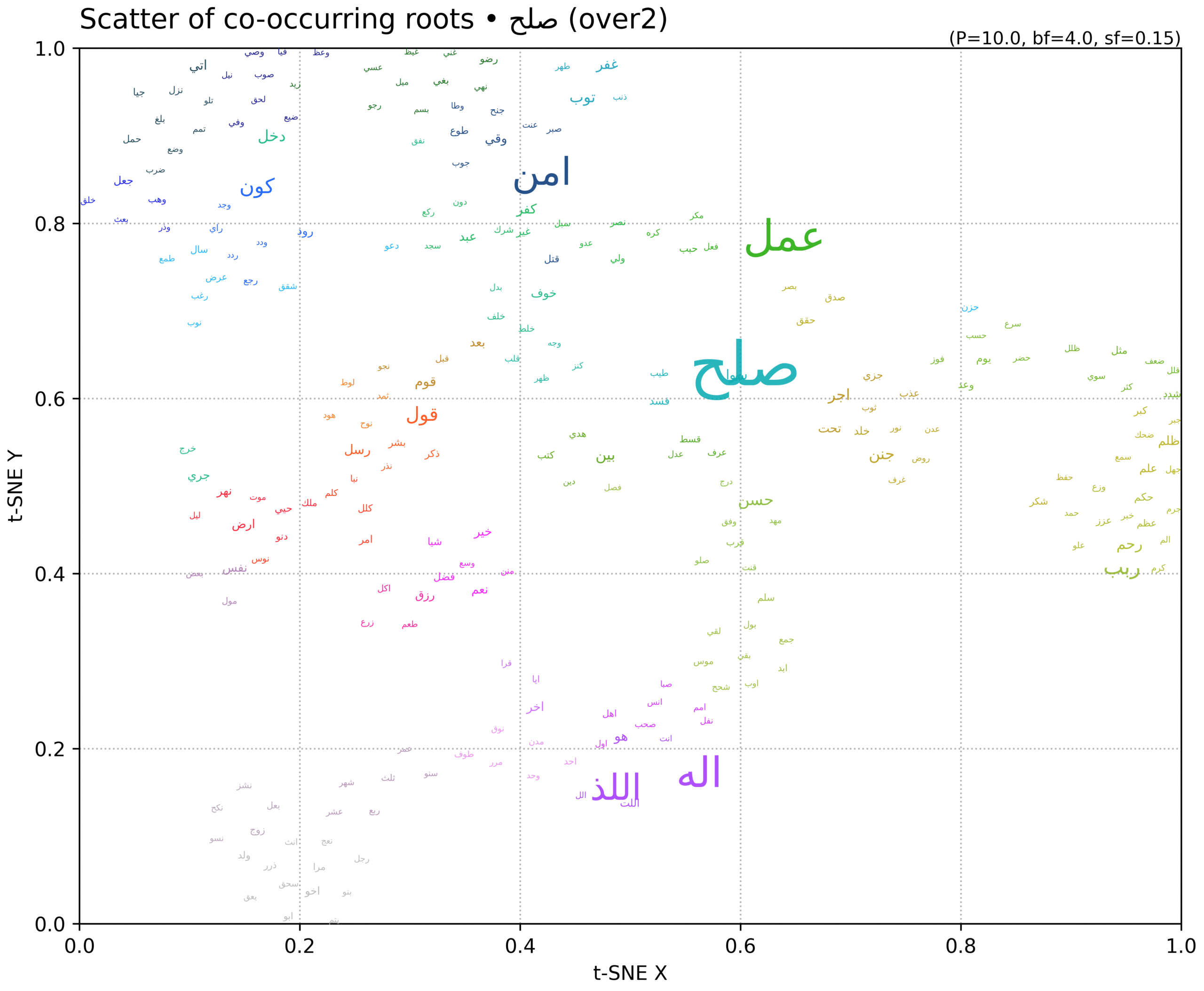Skills
Tools
This project pioneers a computational hermeneutics framework for exploring the Qur’an, combining deep linguistic tradition with cutting-edge Natural Language Processing (NLP). At its heart, the system treats Arabic roots—the building blocks of Qur’anic language—not simply as grammar but as semantic anchors around which meaning and interpretation revolve. By embedding these roots using Arabic-specific transformer models like AraBERT, the project creates a semantic map of the Qur’an, where clusters of roots reveal themes such as peace, continuity, corruption, and righteousness.
The pipeline operates at three levels of analysis: root, verse, and adaptive multi-verse windows. At the root level, co-occurrence and clustering methods highlight how concepts emerge in relation to one another. At the verse level, embeddings group semantically similar verses, surfacing thematic neighborhoods. At the window level, the analysis traces conceptual flows and oppositions across passages, uncovering dynamic rhythms of meaning—such as the interplay between صلح (reconciliation) and فسد (corruption), or بقي (continuity) and divine reward. Together, these levels establish a scalable, reproducible system for examining Qur’anic semantics beyond surface reading.
This work is not aimed at replacing traditional exegesis, but at enriching it. By treating the Qur’an as a self-contained semantic system, free from contested external authorities, the project offers a universally accessible interpretive lens. Its outputs—clusters, scatter plots, heatmaps, and verse groupings—serve as both analytical tools and platforms for deeper human reflection. In essence, the project bridges sacred tradition with computational innovation, enabling new ways to explore how timeless Qur’anic concepts speak to questions of ethics, legacy, and continuity today.

